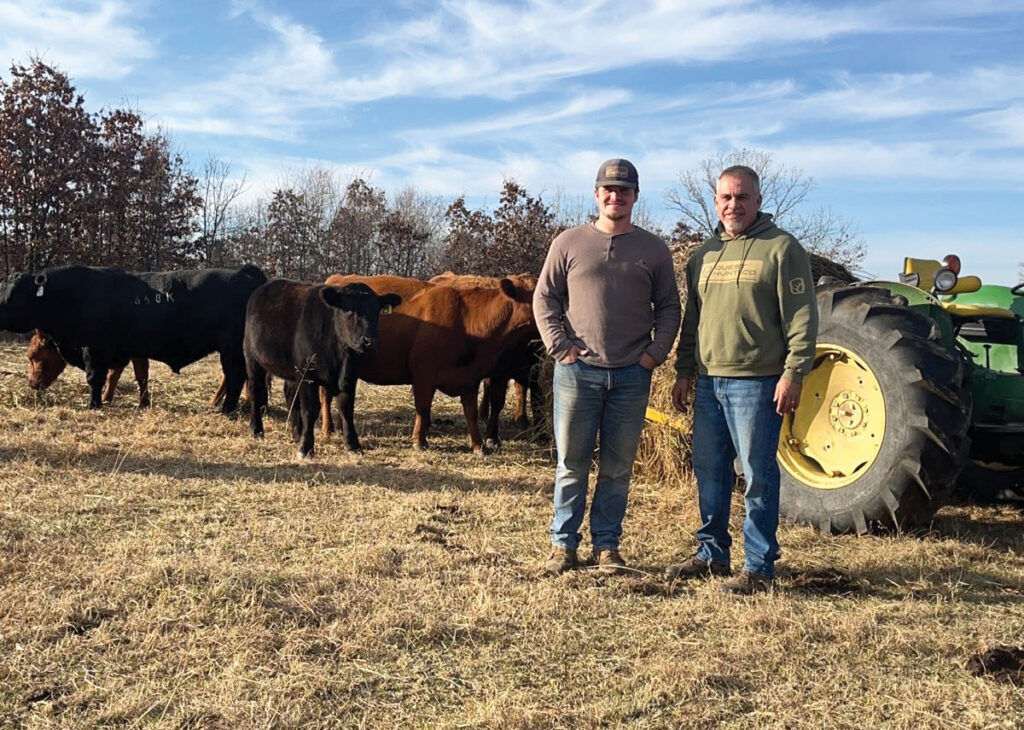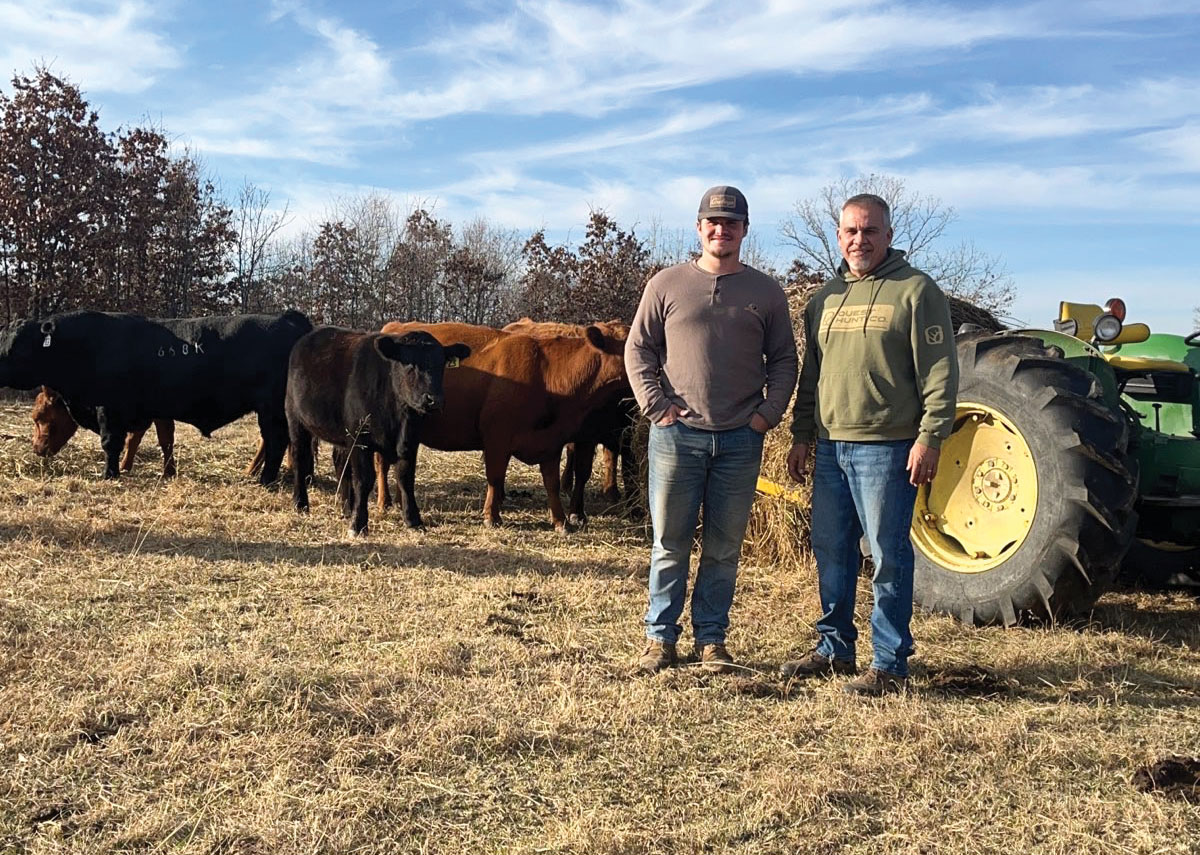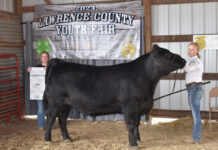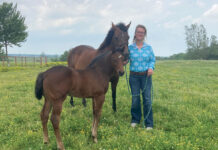
Reece Gabbert is a traveling farrier and a cattle producer
Farrier Reece Gabbert spends a lot of time on the road to serve his equine clients. He splits his time between Missouri and Oklahoma.
At least three days a week, he is at the Ava, Mo., farm where he and his father, Kevin, are partners in a cattle operation.
“We are primarily cow/calf,” Reece explained. “We have close to about 60 mommas; they are split pretty evenly between us. I live in Oklahoma half of the time but am still around to help on the farm, so it works out well for both of us. I have a few registered Red Angus cows and then the rest are a good mix of black and unregistered Red Angus, and Dad has a few white-faced cows in there too.”
The family operation, which also includes Reece’s mom Tonya, moved from the Pleasant Hope area about three years ago, taking the name Bear Creek Ranch with them.
“The Bear Creek ran through our farm, so we just kept the name,” Reece said.
Prior to living near Pleasant Hope, the family lived in Sedalia. The Polk County property is currently leased to a family member.
Reece operates Bear Creek Horse Shoeing and has clients between Stillwater, Okla., and Ava.
“It works out,” he said with a laugh. “I catch my clients coming and going.”
Reece and his wife Emily currently live in Stillwater.
Moving from one farm to another can sometimes present a few problems regarding operation infrastructure, and the Gabberts had a couple of hurdles.
“We were doing a fall and spring herd, but that first year, we had an all-year herd,” Reece said. “The bulls were getting out, so we had to work on a lot of fence. There were kind of outlines of fences, but we now have a lot of fence up and have put in a new working area. I think it’s a better setup than what we had at Pleasant Hope. The first two years was a lot of work to get things where we wanted them.”
Luckily, the fences were the only major repairs needed, and the farm’s forages had been relatively well maintained.
“It’s got a lot of fescue with a good amount of clover mixed in; we’ve let it be,” Reece said.
The family produces most of the hay needed for their herd from their own land and from leased property. When possible, they stockpile forages for fall grazing.
The Bear Creek herd calves in both the spring and fall. Calves are generally sold about 30 days after weaning.
“When we think the market is as good as it’s going to get, we take them to the sale,” Reece explained. “They are, depending on their mommas, between 400 to 500 pounds. The heifers and steers we take to the sale, we will get them started on feed after weaning. That’s just something we have done in the last few years, and it’s working out well for us.”
Few heifers are retained for the Gabbert herd.
“We usually bring in heifers,” Reece explained. “We’ve been focusing on that terminal market.”
The cattle are worked as a group twice a year, primarily for deworming.
“We don’t always vaccinate the cows,” Reece said. “Calves we are sending to the sale barn will get at least one round of vaccinations.”
The Gabberts also specialize in offering grass-finished beef in quarters, halves and wholes.
“We do five or six a year, but it depends on how many are ordered and if I can get butcher dates,” Reece said.
Reece has added a South Poll herd sire, hoping to capitalize on the breed’s ability to finish well on grass.
“I’ve been pretty happy with the calves. The first year I had him, he was too young to breed, so we are on our second year of using him and we haven’t had any problems,” Reece said. “He’s a low birthweight bull and is small himself, about 1,700 pounds, but his calves get bulky and get to that finishing weight pretty easy.”
Calves put into the beef program are never offered grain, but they are supplemented with products such as protein tubs with baked molasses.
“We don’t want them to lose weight, especially in the winter,” Reece said. “We want them to stay healthy.”
Steers are processed at 950 to 1,100 pounds.
“Buying a whole or a half can get kind of pricey for people, so I usually go with my smaller steers,” Reece explained. “They are finished on grass, so they don’t have a lot of extra finish. I usually try to process them at a little under 2 years; they are starting to get some fat, but not too much.”
The Gabberts are considering retaining more heifers from their South Poll bull this year to incorporate more of the South Pole genetics into the breeding herd.
Reece hopes to one day incorporate the majority, if not all, calves born at Bear Creek Ranch into the beef program.
“Right now, I’m still shoeing and it takes up the majority of my time,” Reece said. “If I can get to where I am selling more beef, it would be my goal. I’d like to keep the cowherd about the same, but the ideal thing would be to have more direct-to-consumer beef. I would have to find additional, constant buyers.”
He would also like to expand the Bear Creek Ranch operation into Oklahoma.
“I told myself I wouldn’t shoe for more than 10 years, and I’m four or five in now,” Reece said. “I love doing it, but I would like to expand a little and make the herd a little more sustainable. It’s just a matter of getting there.”







